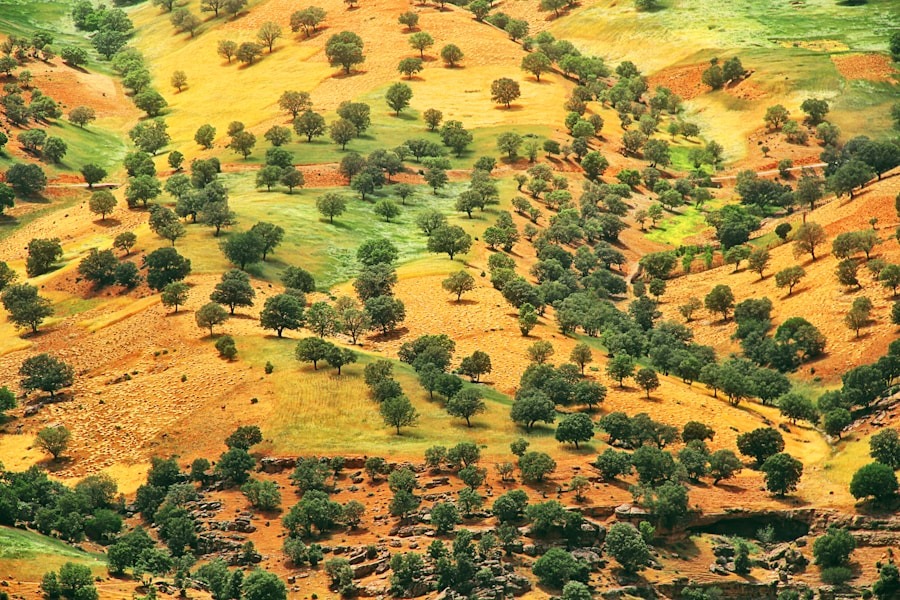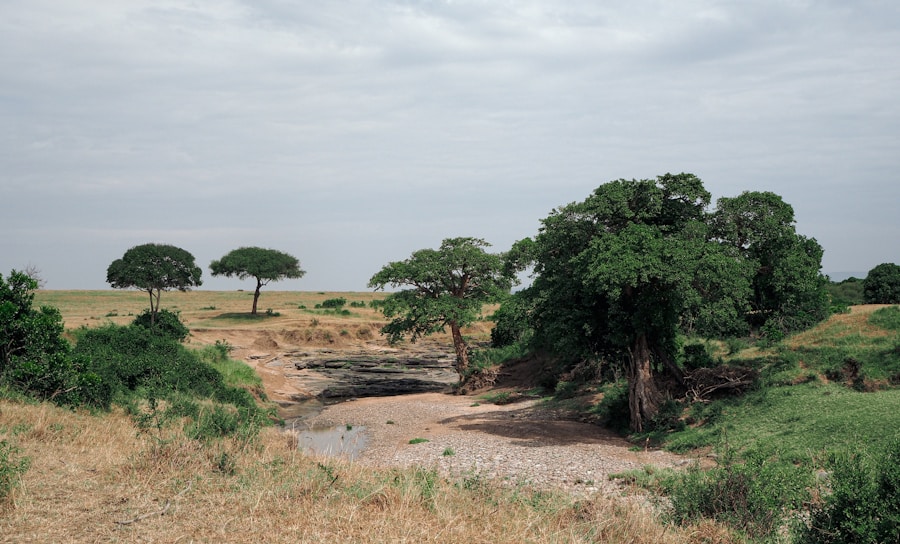Transboundary ecological challenges refer to environmental issues that cross national borders, affecting multiple countries and regions. These challenges arise from a variety of sources, including pollution, climate change, deforestation, and the depletion of natural resources. The interconnectedness of ecosystems means that the actions taken in one country can have significant repercussions in neighboring nations.
For instance, rivers that flow through multiple countries can carry pollutants from one region to another, while air pollution can drift across borders, impacting air quality and public health far from its source. As globalization continues to increase interdependence among nations, the urgency to address these challenges has never been more pressing. The complexity of transboundary ecological challenges is compounded by the diverse political, economic, and social contexts of the countries involved.
Each nation may have different priorities, regulatory frameworks, and levels of capacity to address environmental issues. This disparity can lead to conflicts over resource management and environmental protection. Moreover, the lack of a unified approach can hinder effective responses to ecological crises.
As such, understanding the nature of these challenges is crucial for developing collaborative strategies that can mitigate their impacts and promote sustainable development across borders.
Key Takeaways
- Transboundary ecological challenges refer to environmental issues that extend beyond national borders and require cooperation between countries to address.
- Examples of transboundary ecological challenges include air and water pollution, deforestation, and the spread of invasive species.
- These challenges have a significant impact on ecosystems and biodiversity, leading to habitat destruction, species extinction, and loss of ecosystem services.
- Efforts to address transboundary ecological challenges include the development of international agreements, collaborative research, and the implementation of sustainable management practices.
- International cooperation plays a crucial role in addressing transboundary ecological challenges by facilitating information sharing, resource allocation, and coordinated action between countries.
Examples of Transboundary Ecological Challenges
One prominent example of a transboundary ecological challenge is the pollution of shared water bodies. The Ganges River, which flows through India and Bangladesh, is a vital water source for millions of people. However, it has been severely polluted due to industrial waste, sewage discharge, and agricultural runoff.
The consequences of this pollution extend beyond national borders, affecting the health of communities in both countries and threatening aquatic biodiversity. Efforts to clean up the Ganges require cooperation between India and Bangladesh, as well as engagement with local stakeholders to ensure that solutions are equitable and effective. Another significant transboundary challenge is climate change, which affects ecosystems and communities worldwide.
The melting of polar ice caps and glaciers has implications for sea-level rise that threaten coastal regions in multiple countries. For instance, small island nations in the Pacific are particularly vulnerable to rising sea levels caused by climate change, which is largely driven by greenhouse gas emissions from industrialized nations. The impacts of climate change are not confined to one nation; they reverberate across borders, necessitating a collective response from the global community.
The Paris Agreement exemplifies an international effort to address climate change by encouraging countries to commit to reducing their carbon emissions and enhancing resilience against its effects.
Impact of Transboundary Ecological Challenges on Ecosystems and Biodiversity

Transboundary ecological challenges have profound implications for ecosystems and biodiversity. When pollutants enter shared water bodies or air systems, they can disrupt local ecosystems, leading to declines in species populations and loss of biodiversity. For example, the introduction of invasive species through international trade can threaten native species in multiple countries.
The zebra mussel, originally from Eastern Europe, has spread to North America and caused significant ecological and economic damage by outcompeting native species and clogging water intake systems. Moreover, habitat destruction resulting from transboundary activities such as deforestation or mining can lead to fragmentation of ecosystems that are crucial for wildlife survival. The Amazon rainforest, which spans several countries in South America, is a prime example where illegal logging and agricultural expansion threaten not only local biodiversity but also global climate stability.
The loss of trees reduces carbon sequestration capacity and disrupts water cycles that are vital for both local communities and distant regions dependent on the Amazon’s ecological services.
Efforts and Strategies to Address Transboundary Ecological Challenges
Addressing transboundary ecological challenges requires innovative strategies that foster collaboration among nations. One effective approach is the establishment of transboundary protected areas (TBPAs), which are designated regions that span across national borders to conserve biodiversity and promote sustainable resource management. An example is the Yellowstone to Yukon Conservation Initiative in North America, which aims to create a connected network of protected areas that facilitate wildlife movement and habitat preservation across the U.S.-Canada border.
In addition to creating protected areas, international treaties play a crucial role in addressing transboundary ecological challenges. The Convention on Biological Diversity (CBD) is an international agreement aimed at conserving biodiversity, promoting sustainable use of its components, and ensuring fair sharing of benefits arising from genetic resources. By fostering cooperation among signatory countries, the CBD encourages collaborative efforts to tackle issues such as habitat loss and species extinction that transcend national boundaries.
Role of International Cooperation in Addressing Transboundary Ecological Challenges
International cooperation is essential for effectively addressing transboundary ecological challenges. Collaborative frameworks enable countries to share knowledge, resources, and best practices while fostering mutual understanding and trust.
The EU Water Framework Directive exemplifies this approach by promoting integrated water management across member states to protect water quality in shared rivers and lakes. Furthermore, international cooperation can facilitate technology transfer and capacity building in developing countries facing significant ecological challenges. Programs funded by organizations like the United Nations Development Programme (UNDP) provide technical assistance and financial resources to help nations implement sustainable practices that address transboundary issues.
By working together on common goals, countries can leverage their collective strengths to create more resilient ecosystems and communities.
Future Outlook for Transboundary Ecological Challenges

The future outlook for transboundary ecological challenges is shaped by several factors, including political will, technological advancements, and public awareness. As climate change continues to escalate, it is likely that transboundary issues will become more pronounced, necessitating urgent action from governments and international organizations alike. The increasing frequency of extreme weather events highlights the need for adaptive strategies that consider cross-border impacts on ecosystems and human populations.
Moreover, advancements in technology offer promising solutions for monitoring and addressing transboundary ecological challenges. Remote sensing technologies can provide real-time data on environmental changes, enabling countries to respond more effectively to emerging threats. Additionally, innovations in sustainable practices—such as renewable energy sources—can help mitigate the drivers of transboundary issues like climate change.
Public awareness and engagement will also play a critical role in shaping future responses to transboundary ecological challenges. Grassroots movements advocating for environmental protection can influence policy decisions at national and international levels. As citizens become more informed about the interconnectedness of global ecosystems, there is potential for increased pressure on governments to prioritize collaborative approaches to environmental stewardship.
In conclusion, while transboundary ecological challenges present significant obstacles to sustainable development and biodiversity conservation, they also offer opportunities for innovation and cooperation among nations. By recognizing the shared nature of these challenges and committing to collective action, countries can work towards a more sustainable future for both their own populations and the planet as a whole.
Transboundary ecological challenges are becoming increasingly prevalent in today’s interconnected world. As we grapple with issues such as climate change and biodiversity loss, it is crucial to consider the philosophical underpinnings of our relationship with the natural world. One article that delves into this topic is Exploring Vedanta Philosophy: Understanding the Nature of Reality and Liberation. This article explores the ancient Indian philosophy of Vedanta and its teachings on the interconnectedness of all living beings and the importance of living in harmony with nature. By reflecting on these philosophical insights, we can gain a deeper understanding of the ecological challenges we face and work towards sustainable solutions.
FAQs
What are transboundary ecological challenges?
Transboundary ecological challenges refer to environmental issues that extend beyond national borders and require cooperation and coordination between different countries to address.
What are some examples of transboundary ecological challenges?
Examples of transboundary ecological challenges include air and water pollution, deforestation, climate change, and the spread of invasive species, which can all have impacts that cross international boundaries.
Why is it important to address transboundary ecological challenges?
It is important to address transboundary ecological challenges because environmental issues do not respect national borders and can have far-reaching impacts on ecosystems, human health, and economies. Cooperation between countries is essential to effectively address these challenges.
How do countries work together to address transboundary ecological challenges?
Countries can work together to address transboundary ecological challenges through international agreements, treaties, and partnerships. This may involve sharing information, coordinating policies and regulations, and implementing joint conservation and management efforts.
What are some successful examples of international cooperation to address transboundary ecological challenges?
Successful examples of international cooperation to address transboundary ecological challenges include the establishment of transboundary protected areas, such as the Peace Parks in southern Africa, and the implementation of agreements to reduce air and water pollution across borders, such as the Convention on Long-Range Transboundary Air Pollution.





















+ There are no comments
Add yours